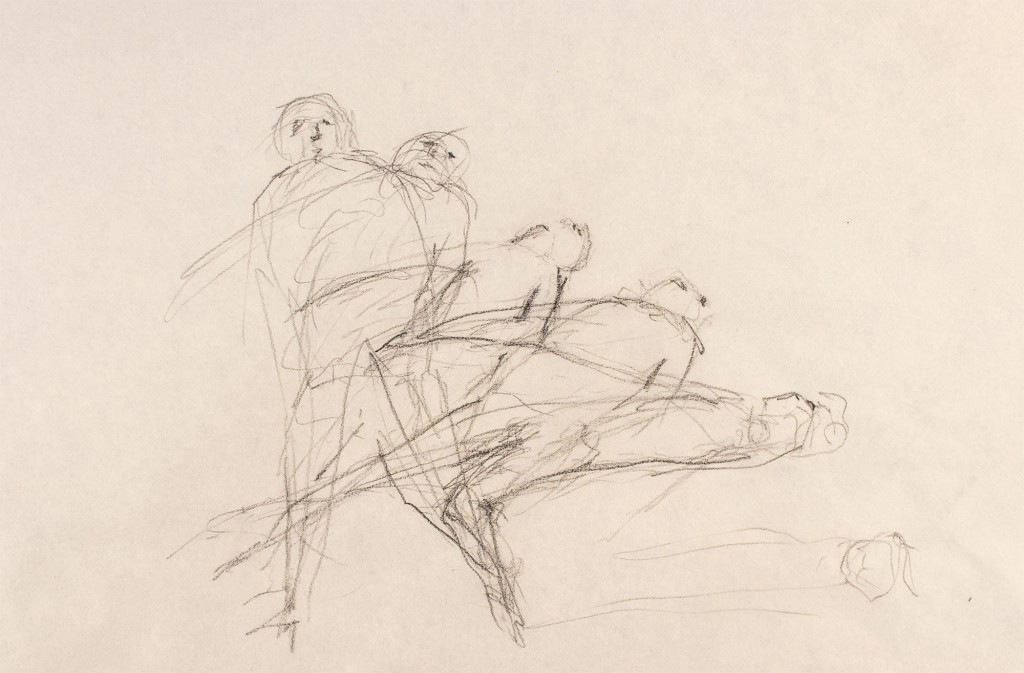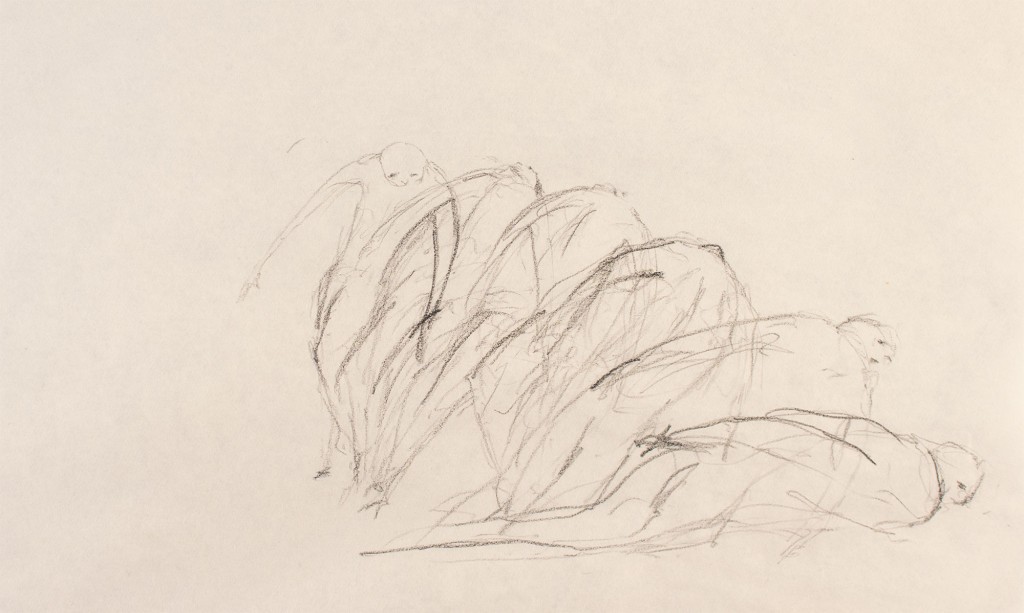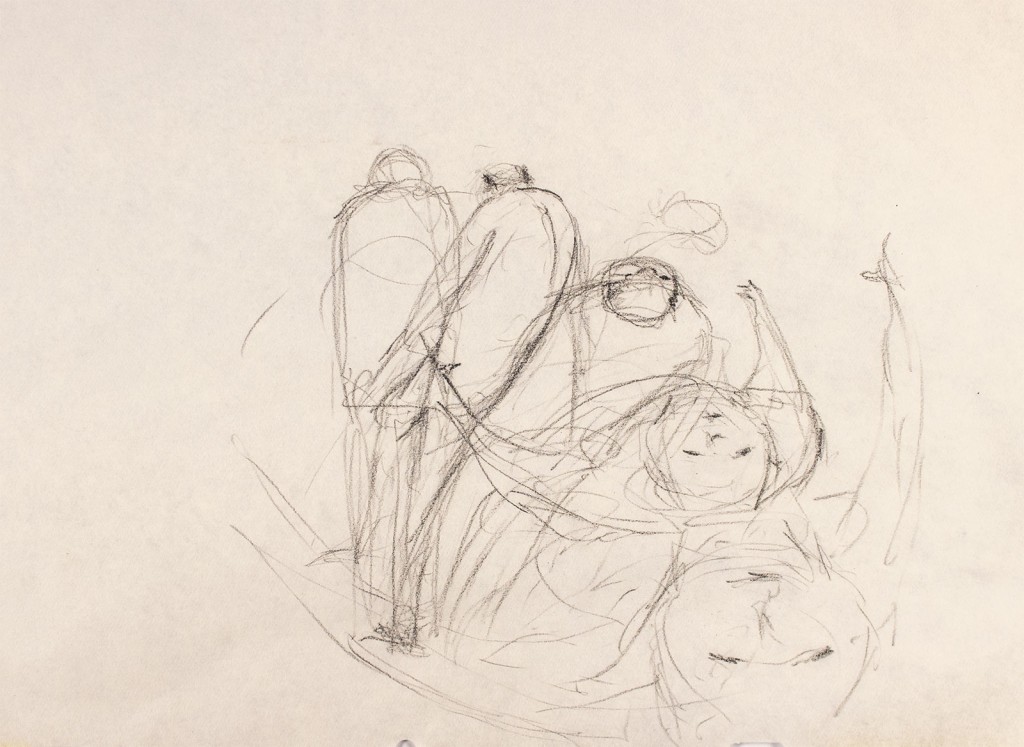Once I had the image I wanted to work with (Post 1) and a general structure/framework (Post 2) I began animating. I started by doing a few quick sketches to plan the motion path:
As usual, the first one was for warm up but not very satisfying, the motion was too stiff, not much going on here.
I put some eyes to have a better feeling of where things are going… a little better but it would be too short, I am after something that is between dramatic in the sense that the body does something more than just collapsing immediately to the ground. At the same time it can’t be “cartoony”, not doing comedy.
Jerzy was very helpful on this, he emphasized on the tone of my film and how to bring forward all the emotional elements of what I want to tell by concentrating on the way things move and how I render the drawing. He would say: “We need to see the body”, it was not enough to be able to “see” the man on-screen, the body had to tell the audience everything.

I try then to bend the body a little and maybe some rotation while falling. I start thinking about it as a dance, especially because the plan is to have this animation develop in slow motion. Getting somewhere, but not quite there yet.

I try a different angle, it seems to be getting more dramatic in the way I want, but still felt maybe would be too short of a motion for what I need.

This one seemed to have the elements I needed, it was a little exaggerated of a motion but not funny and the rotation gave me more time to develop something while he is falling.

This was the animation that come from it.
The image of a dead man falling into the ground made the idea come to life, not only that, but I could watch it, see my father, feel all kinds of emotions, but at the same time I could face it. It is easier to deal with this image once it is animated than when it is inside my head. I have now a better understanding for one of the ideas I’ve found most compelling about animated documentary proposed by Sheila Sofian:
The audience reacts to animated documentary in a much different way than traditional live-action documentary. I believe that the use of iconographic images impact the viewer in a way in which live-action cannot. The images are personal and “friendly.” We are willing to receive animated images without putting up any barriers, opening ourselves up for a powerful and potentially emotional experience. The simplicity of the images relieves some of the harshness of the topic being described. [1]
Up to this point I was moving towards an animation that kind of unfolds in time in a more linear way, perhaps with some generative elements due to the use of data, but nonetheless quite linear. It was the other professor in the workshop, Gil Alkabetz, who pointed out another possibility. I had just shown him my previous work SiSiSiSiSiSiSiSiSiSiSi and for him there was a clear relationship between the technique I used in that film and the work I am doing now. I was thinking in the fall as something that lasts for a very long time, but what Gil made me realize was that I could use repetition and editing within a loop in the same way that my previous work.
This opened up things for me, I started thinking that I could compose both the image of the man falling and the memories within the same “space” of the paper. Allow the data and the algorithms to navigate this memory space.
Further than that, I thought of the idea of repetition as something I could do beyond one animated film. I am thinking now that in order to exorcise this image properly, I can do more than one animation. In other words, I realized that what I want to do is exhaust this image in all the possible ways I can. Drawings, films, interactive, installation, and all the possible ways in which I can push this image out of my system.
I wonder what would happen to me and that memory, I wonder if my pursue for an emotional reaction from the audience is me trying to teach myself how to feel about these events of my life. Like a process of disembodiment to be able to look at myself from the outside, putting myself as another viewer experiencing the spectacle of my abstract autobiography. Don’t know yet, but that is the goal now…
[1] Sofian, S. (2005). The Truth in Pictures. Frames per Second Magazine of Animation. Vol. II: 7-10.